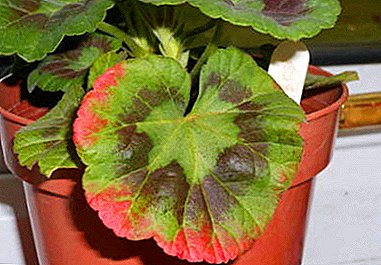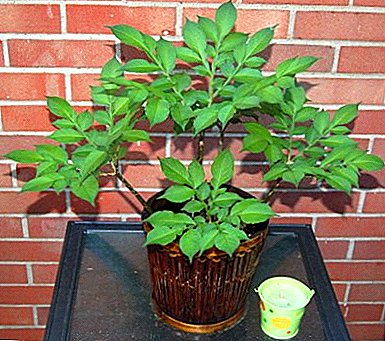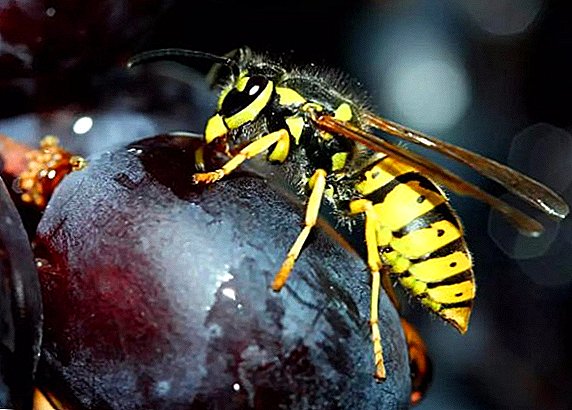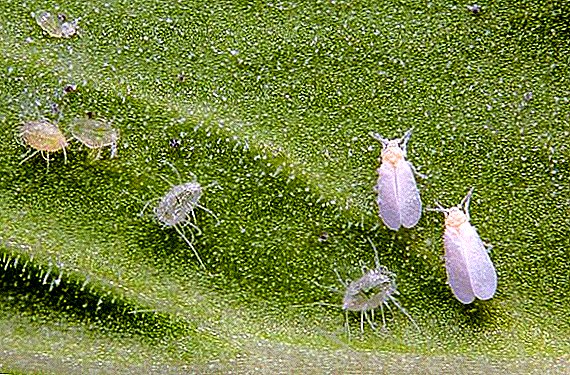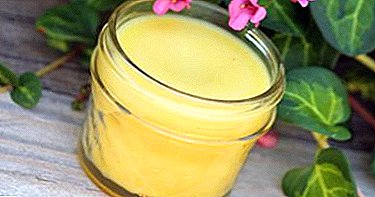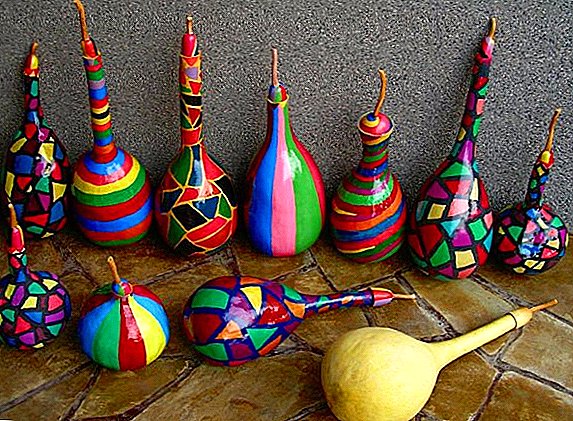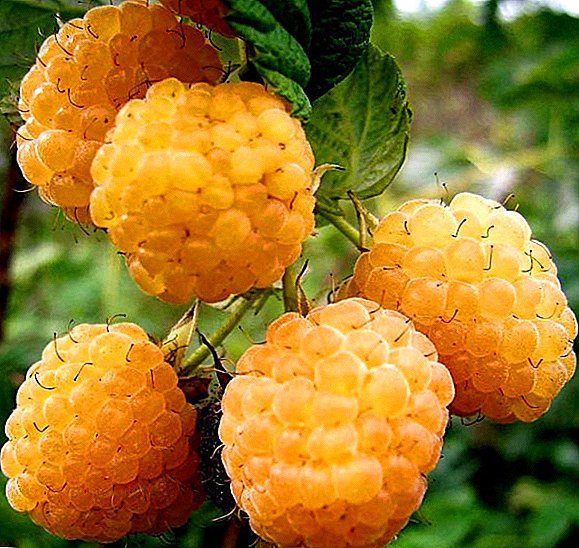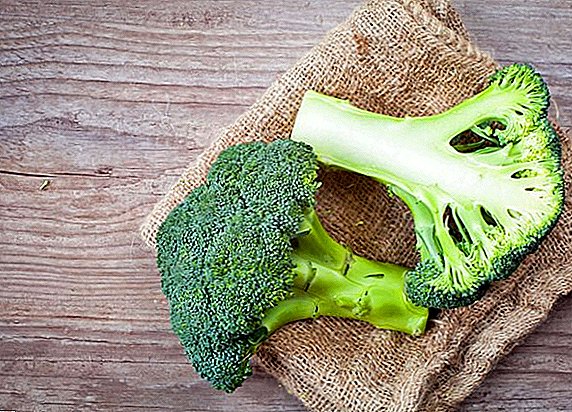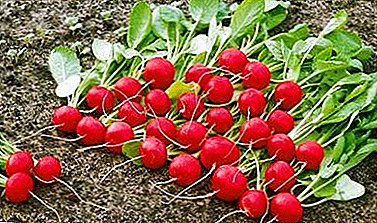
Radish is a vegetable rich in vitamins, minerals, micro-and macronutrients. There are a lot of varieties of radish at the moment.
Breeders are constantly working to create more and more new varieties that are resistant to diseases, have excellent yields, as well as the early sowing period. Today we will talk about such a variety as Cheriett F1 (F1). Look at how this radish variety looks and learn all about its features and growing rules from our article.
Detailed characteristics and description of the variety
Appearance
It should be noted that the described variety is a hybrid. This is the result of the work of Japanese breeders. This explains a lot of its properties.
 Sheet rosette half erect. The leaf plates are pale green in color, they are narrow and long in shape. The plant is strong, slightly harsh, shortened. The roots themselves are not very large in diameter, usually do not reach more than 5 centimeters. The shape of the radish is round, has a rich dark pink shade.
Sheet rosette half erect. The leaf plates are pale green in color, they are narrow and long in shape. The plant is strong, slightly harsh, shortened. The roots themselves are not very large in diameter, usually do not reach more than 5 centimeters. The shape of the radish is round, has a rich dark pink shade.
Almost all fruits are distinguished by their correct shape and smooth surface.have a beautiful presentation. If we talk about the weight category, then usually the weight reaches 25-30 grams, and with good care it can increase up to 40 grams. The taste pulp is juicy, pleasant, no particular spiciness.
Sowing time
This will create a greenhouse effect. But in the open ground you can transfer seedlings at a time when the earth warms up a little - at least up to 5-7 degrees Celsius.
Yield
This vegetable gives an average of 2.5-3 kilograms of fruit per square meter. These figures can be improved by feeding the radish with fertilizers. But dressing must be chosen on a natural basis without chemical additives.
Where is it recommended to grow?
Cheriett variety is great for growing outdoors. Such conditions are most suitable for the cultivation of radish. However, this hybrid can be grown in a greenhouse and even at home on the windowsill. The main thing - to comply with the "street" conditions at home. If you grow radish in a greenhouse, then you can get a harvest all year round.
Disease resistance
Since this the variety is a hybrid, therefore it is characterized by good immunity to disease and pests. Radish treatment with drugs against pests and diseases is not mandatory. However, if it is possible, it is better to take preventive measures.
Terms of ripening
 The described variety is characterized by early ripening.
The described variety is characterized by early ripening.
The period from the time of emergence of the first seedlings to the appearance of the first formed fruits is not very long - only 18-20 days. This makes it possible to get several harvests in one season.
Sometimes ripening times increase. due to the fact that in the late spring-early summer there is not enough lighting in sufficient quantity.
What kind of soil does it prefer?
The soil should be fertile, light. The earth must pass air freely. Indicators of acidity must be kept at an average level. Land should be loosened regularly. The most suitable substrate is sandy soil with weak acidity.
If your garden plot is too heavy soil, then it will be necessary to add peat and large river sand. To increase the level of soil fertility, it is necessary to make compost and humus. But in reducing the level of acidity will help lime (can be replaced by wood ash).
Breeding history
Japanese specialists brought this variety in the early 2000s. This radish is the result of crossing several varieties. Therefore, the hybrid included all the best performance of its predecessors.
What is the difference from other species?
The described variety is characterized by resistance to diseases, frost, and also quickly matures. This property helps agronomists to get an early harvest, as well as after harvesting radish to plant any other crop of late sowing on the vacant site. Thus, you can win extra square meters, especially in small areas.
Worth saying that this vegetable is universal in terms of cooking. Thanks to its average indicators of bitterness, juiciness and sweetness, radishes can be added to salads, cold soups, and also eat separately.
Advantages and disadvantages
 Almost all the advantages we have already listed.
Almost all the advantages we have already listed.
- However, it is worth mentioning that Cheryatt radish does not shoot arrows, and also does not form a void in the fruit, even in cases where the agronomist did not have time to harvest the crop. This quality is one of the main advantages of the variety.
- Another advantage over other types is the saving of space. Leaf sockets of small size allow you to grow a lot of roots on a small plot of land.
Deficiencies in the variety is not so easy to find. The downside of growing can be called the active growth of foliage. with lack of lighting. This is especially true in late spring, when the sun is still not so much and it is not so actively warm.
What and where is it used for?
Cheriett is grown for home use and for sale. Since this variety is characterized by excellent external indicators, and is also stored for a long time in the refrigerator or basement (about a month), it is an excellent product. Besides transportation radish transfers with ease.
Growing up
You can sow seeds in the greenhouse at the end of March. In open ground, seedlings are planted closer to the end of April.
When choosing a place to land, you should give preference to well-lit areas. Because with a lack of sunlight, only the tops will gain mass, and the fruits will remain small.
It is not necessary to soak the seeds before planting. In depth, the seeds do not need to plant deeper than 1.5-2 centimeters. After the first shoots appear, the radish can be thinned out, leaving about 5 centimeters between the fruits. Radish does not tolerate organic fertilizer (manure or litter). And also it is worth refusing nitrogen based feedings.
It is necessary to water a radish every other day.. This should be done very abundantly - so that the soil was moistened by at least 10 centimeters. After watering the soil, it is necessary to loosen the soil so as not to form a crust. Fertilizing radishes during the growing season is not necessary if you have fed the soil before planting. Initial feeding will be enough.
Harvesting and storage
Three weeks after the first germination, the fruit will be ready to harvest. It is best to store the harvest in the basement, in which the air temperature varies between 4-6 degrees Celsius. Before placing the fruit all the surfaces of the basement is better to handle lime.
Putting radish is best in wooden boxes small size. Put the paper on the bottom of the box, it must be placed between each layer of fruit. In this state, the culture can be stored for one month.
Diseases and pests
 Redis Cheriett resistant to various diseases and pests. However, a cruciferous flea or a leaf beetle can attack a vegetable. These parasites destroy the foliage completely or separate parts of it, because of which the culture can stop growing.
Redis Cheriett resistant to various diseases and pests. However, a cruciferous flea or a leaf beetle can attack a vegetable. These parasites destroy the foliage completely or separate parts of it, because of which the culture can stop growing.
In order to get rid of pests, best to use folk remedies:
- decoction of tomato tops (the ratio of leaves and water - 1: 2);
- ash, tobacco and ground pepper (the proportions of the components are the same, and the amount of water depends on the degree of damage);
- a solution of vinegar (it must be weak, so as not to harm the whole plant).
It is better to refuse the use of drugs of chemical origin (insecticides), since their elements accumulate in the fruit, and this is already dangerous for health.
Prevention of various problems
To grow a beautiful large vegetable with excellent taste, you just need to follow all the above recommendations. The main thing in growing any crop is to do everything in a timely manner and in moderation.
Radish is a vegetable that many people love. However, many gardeners complain that growing radishes is not so simple. But, if you buy a variety Cheriett, problems with growing will be many times less, and yields will increase.



